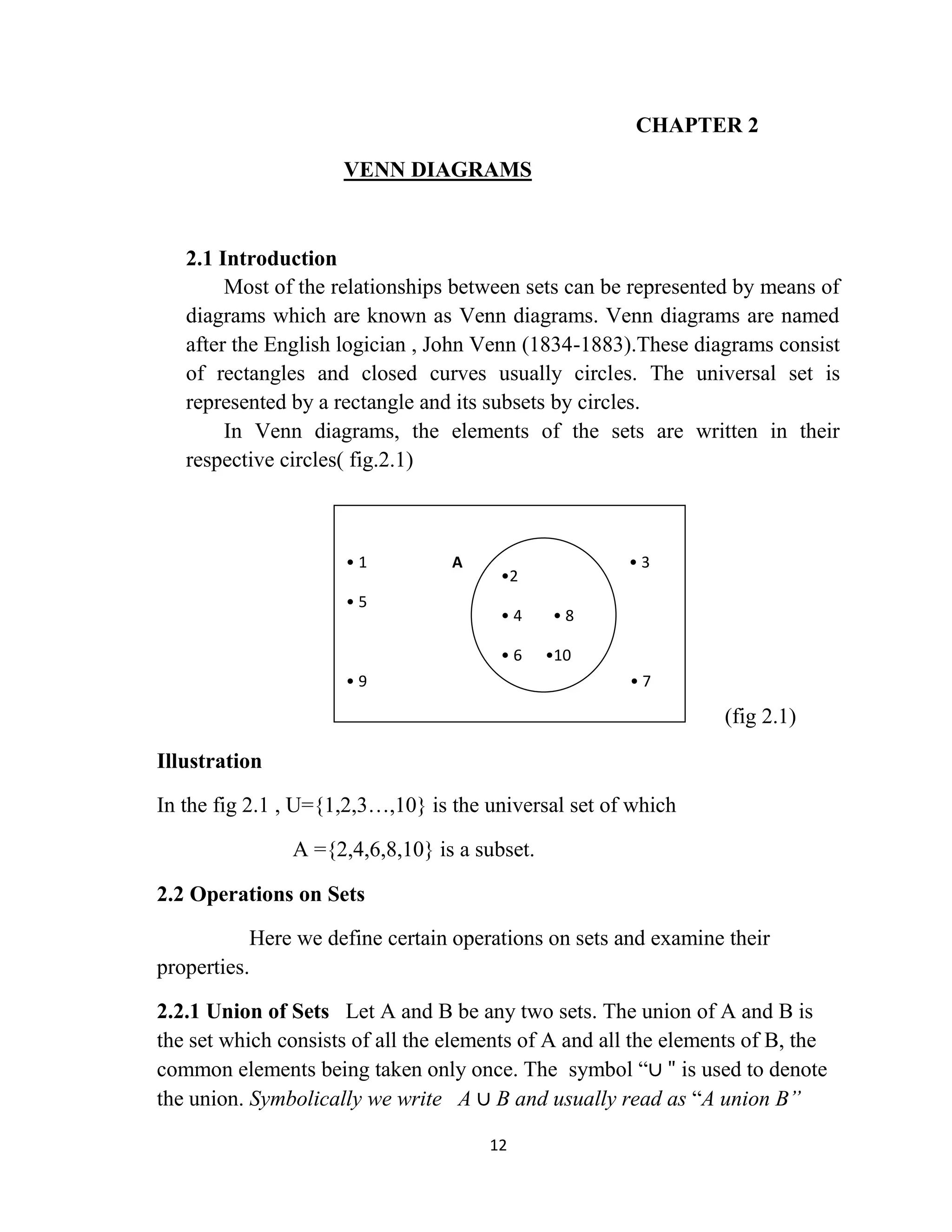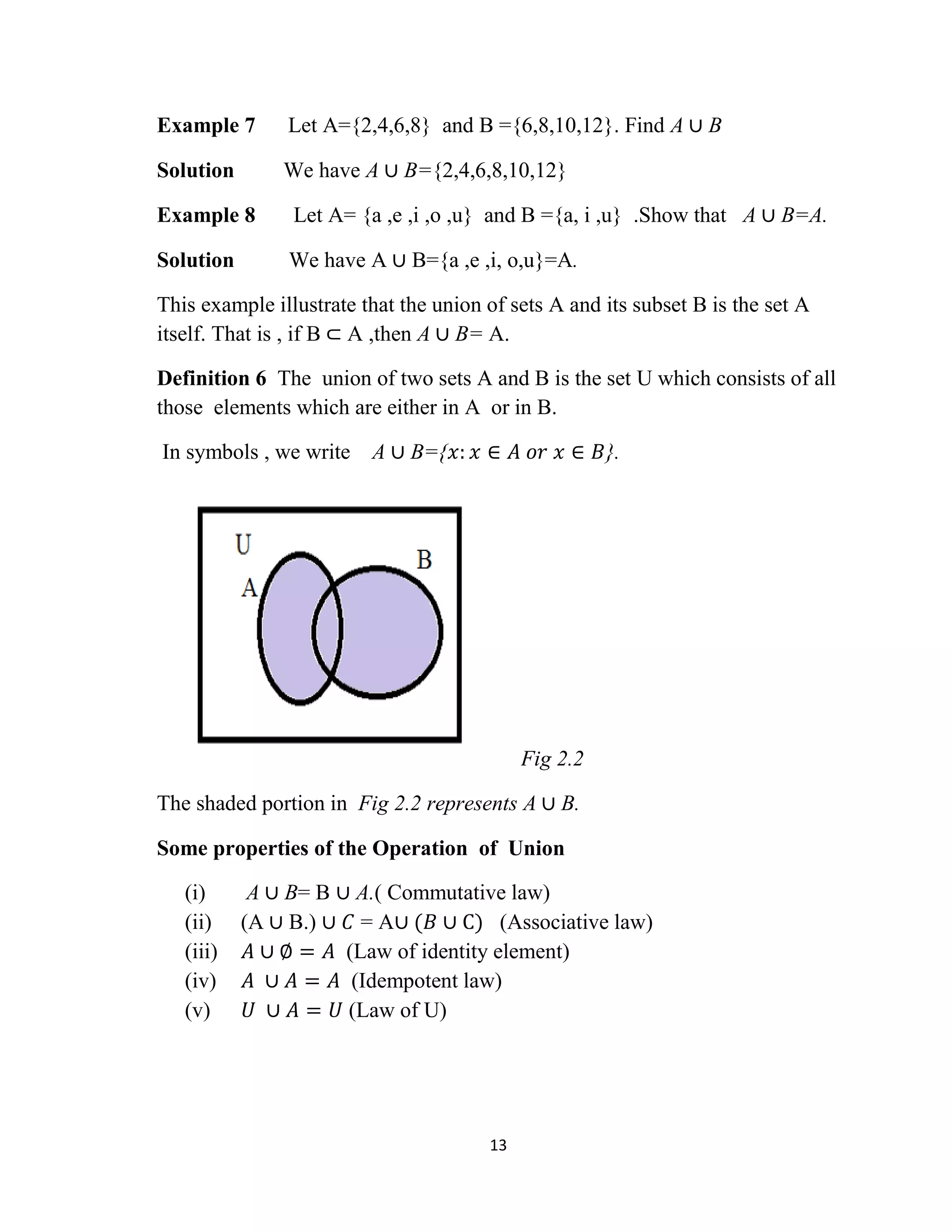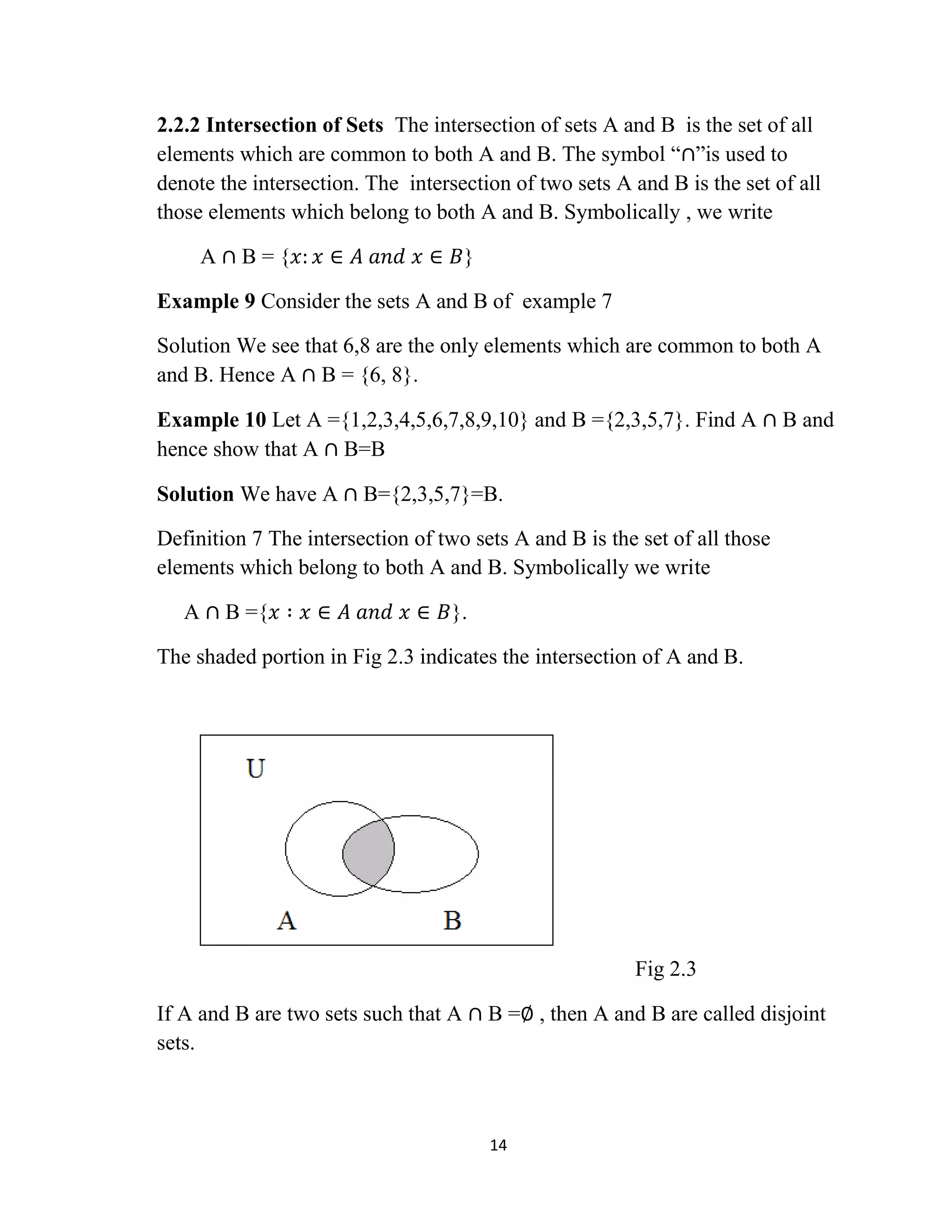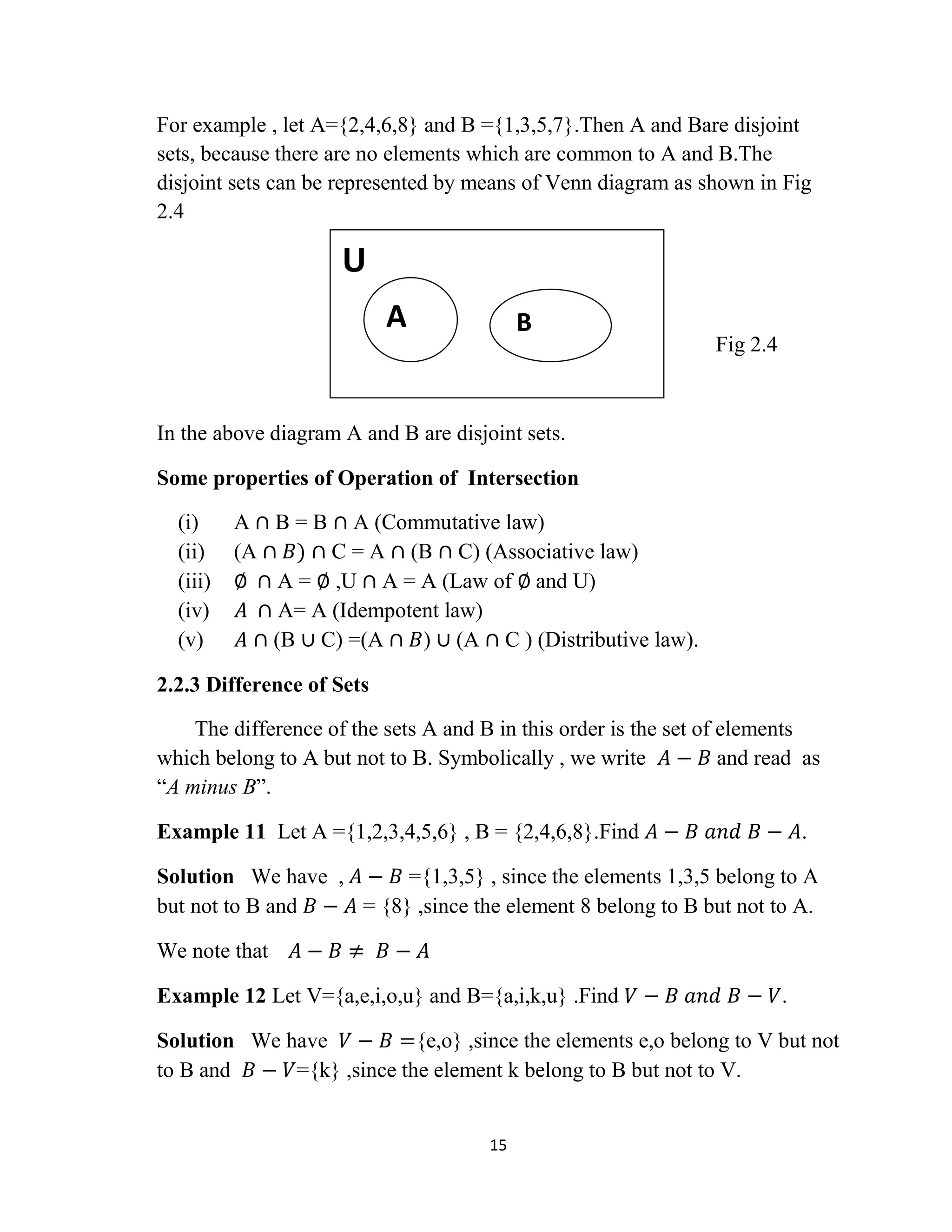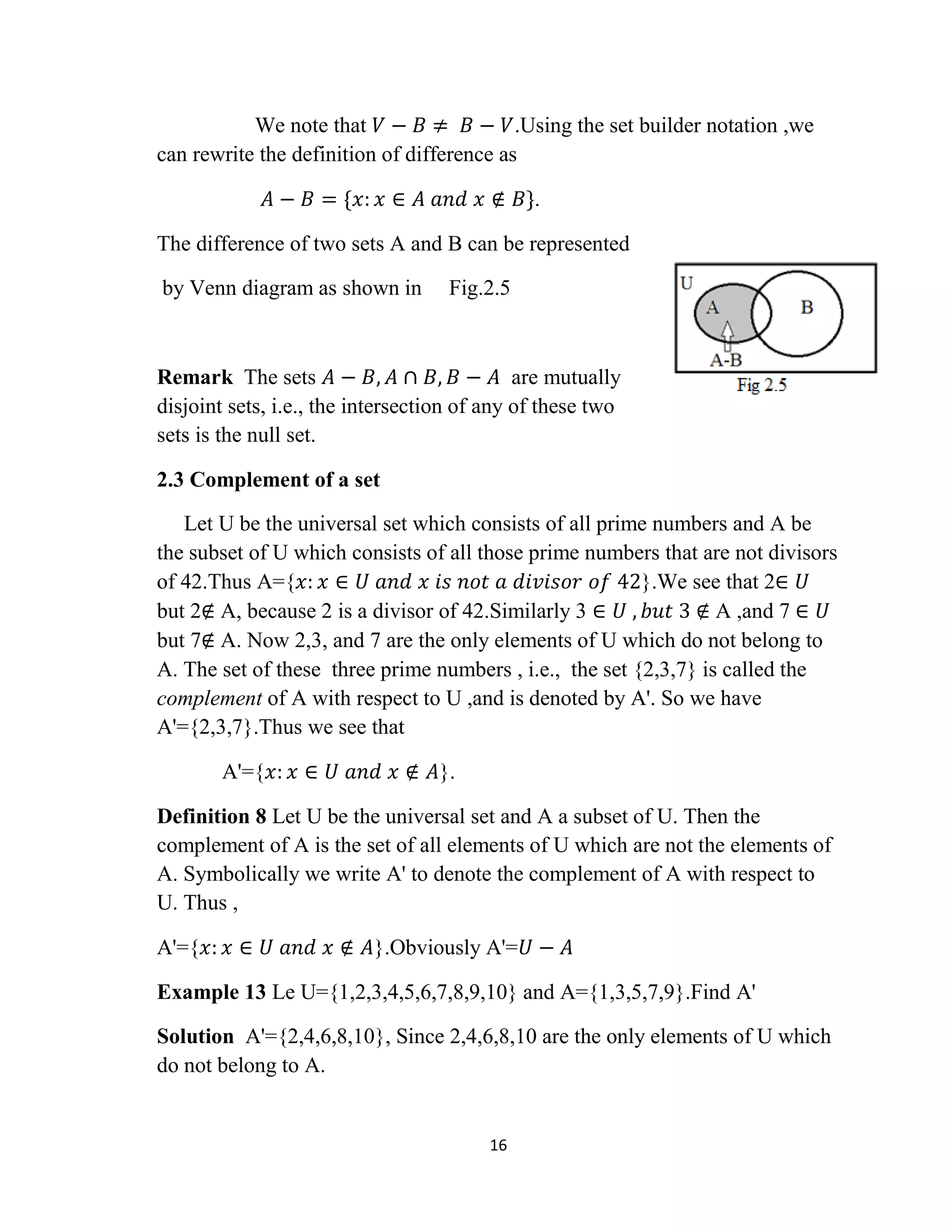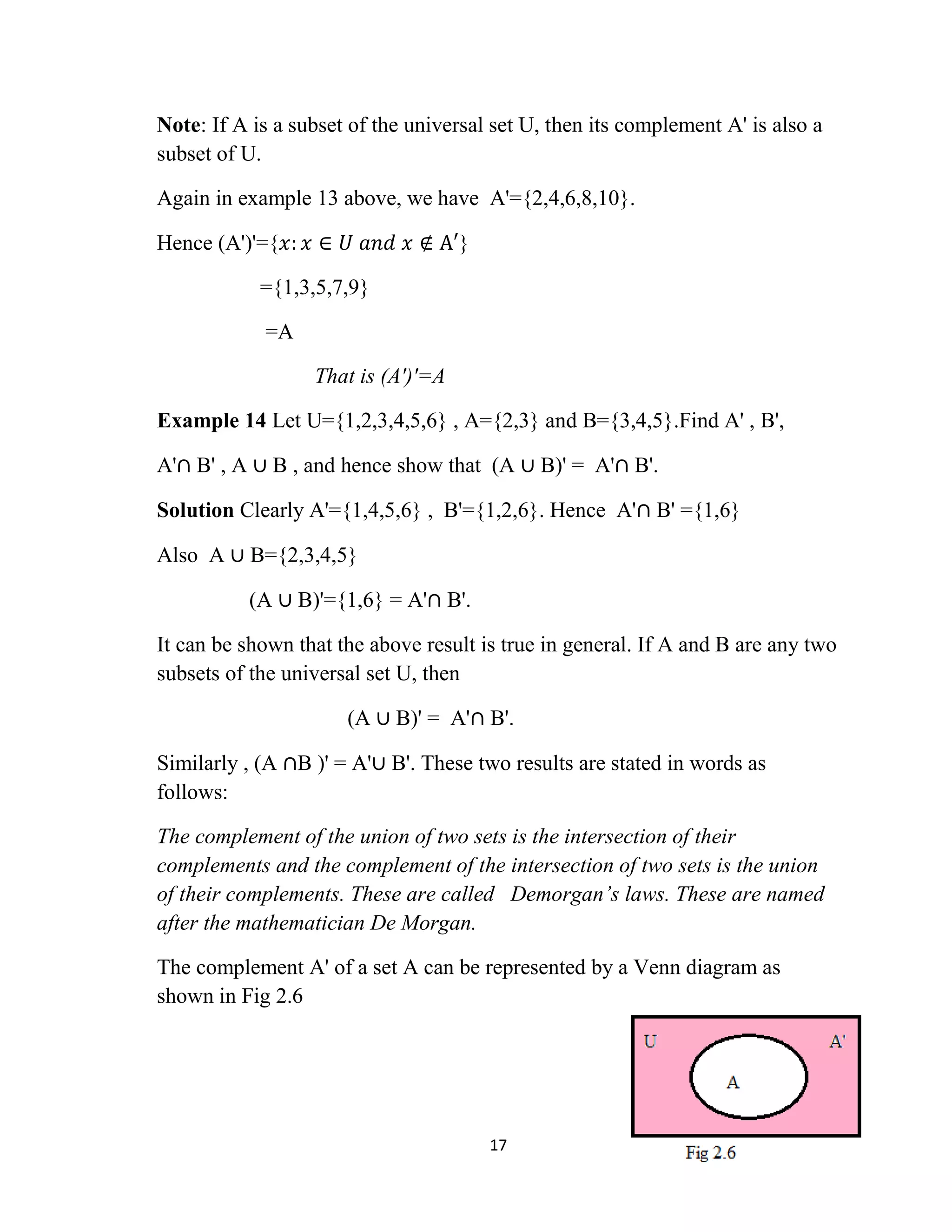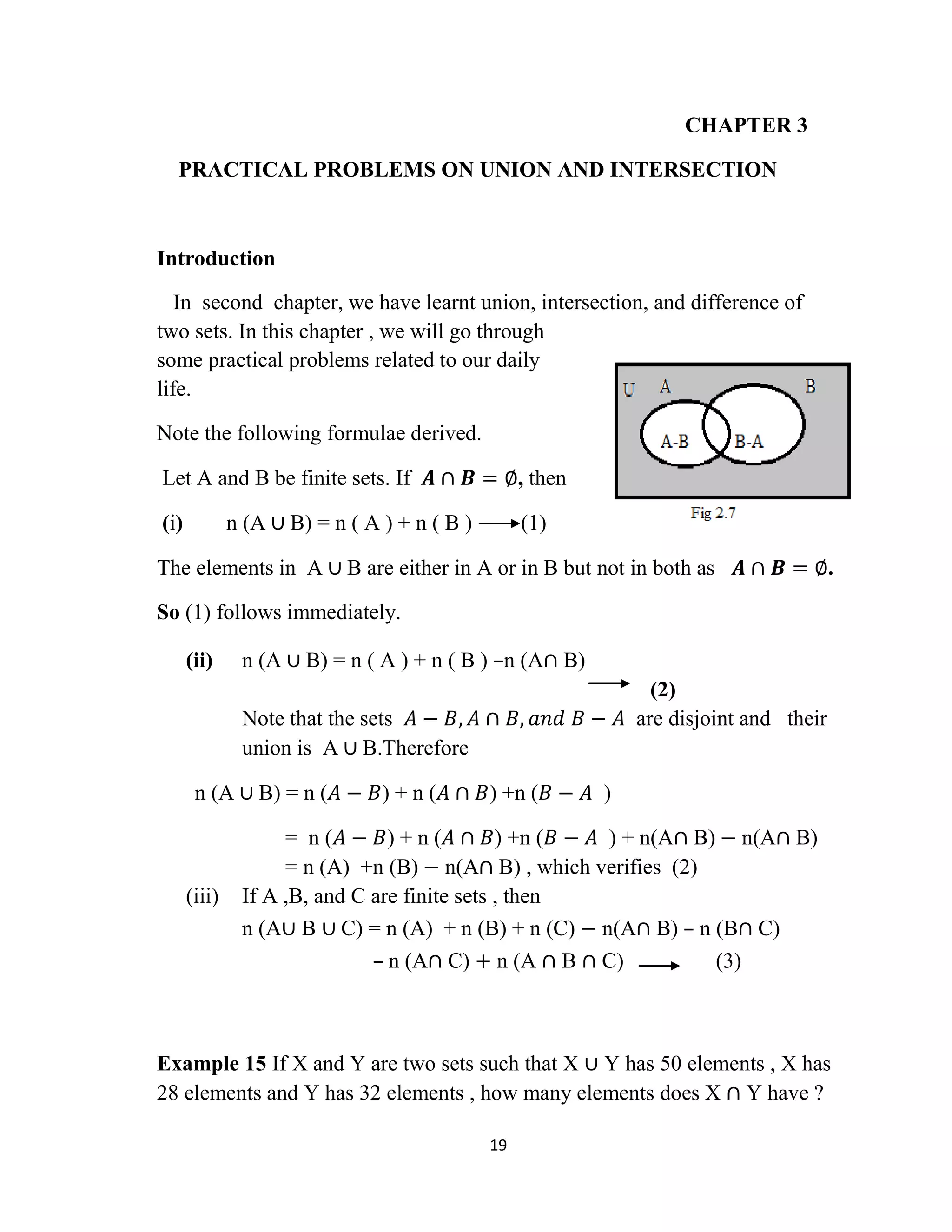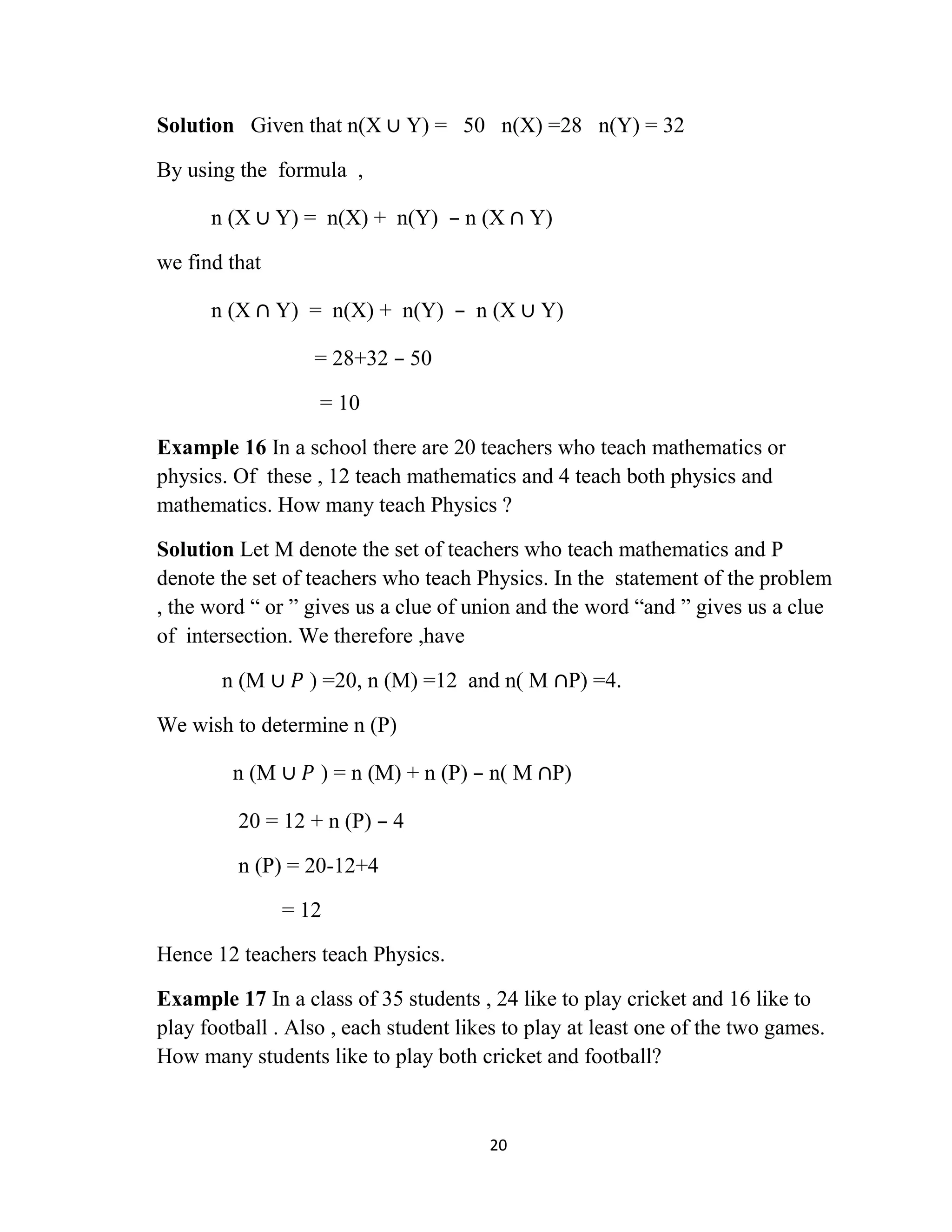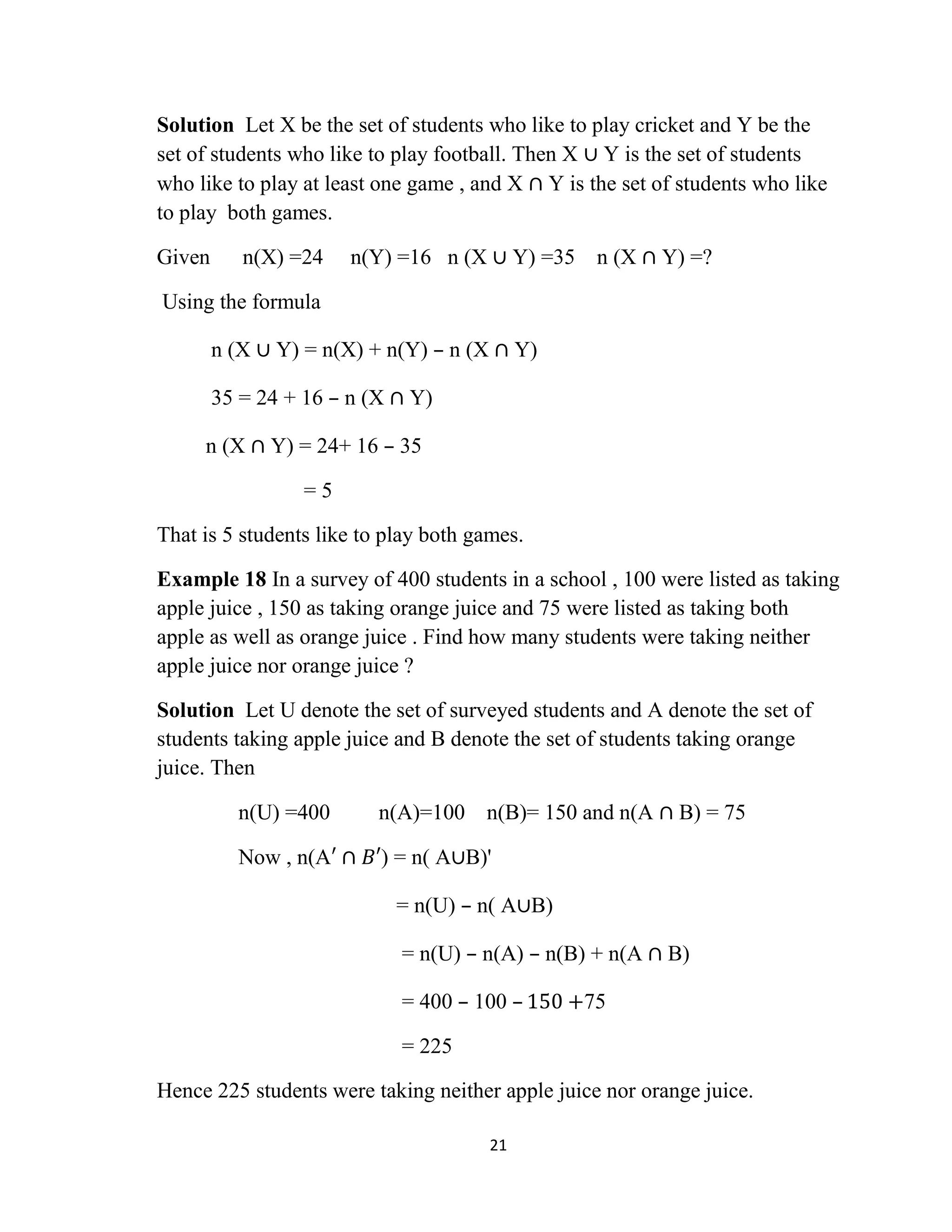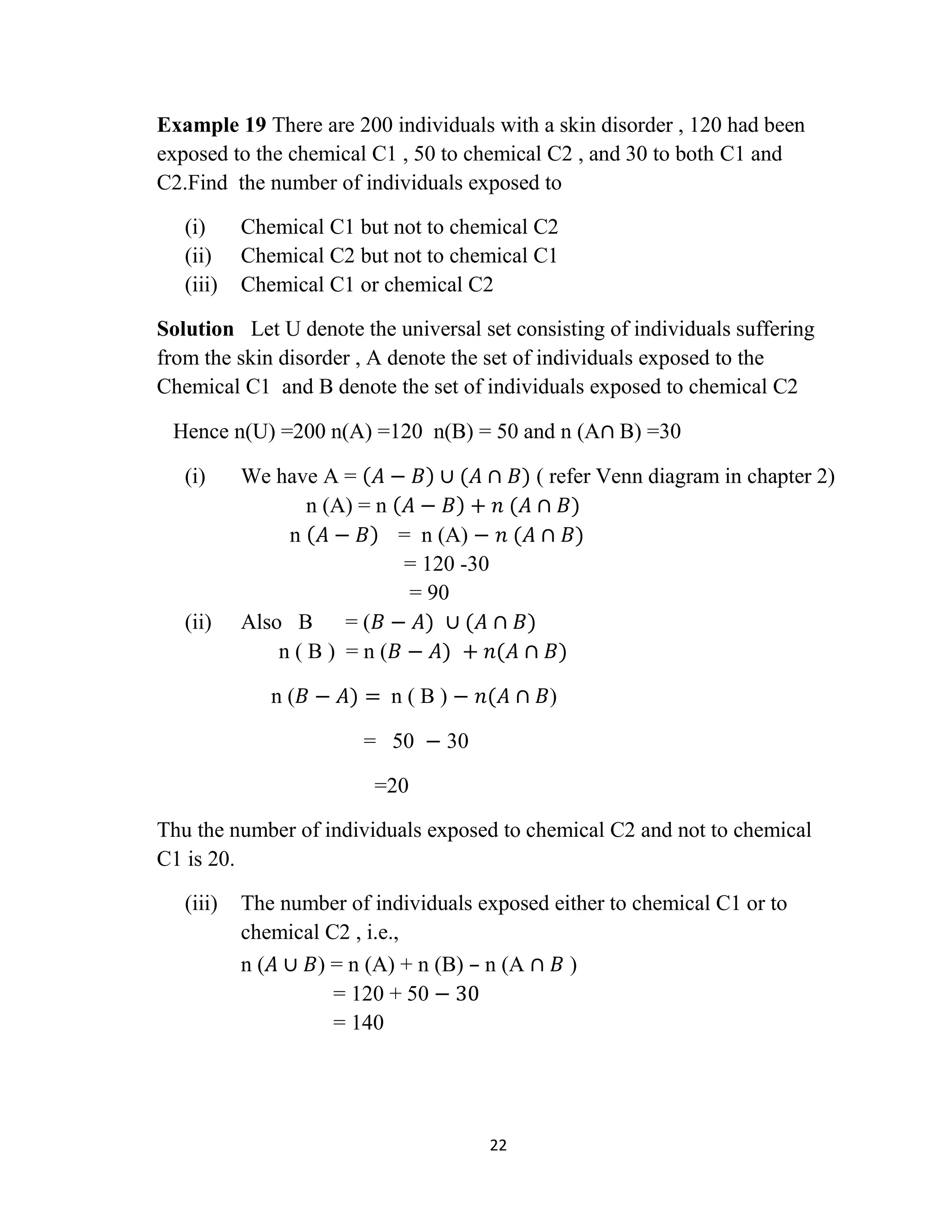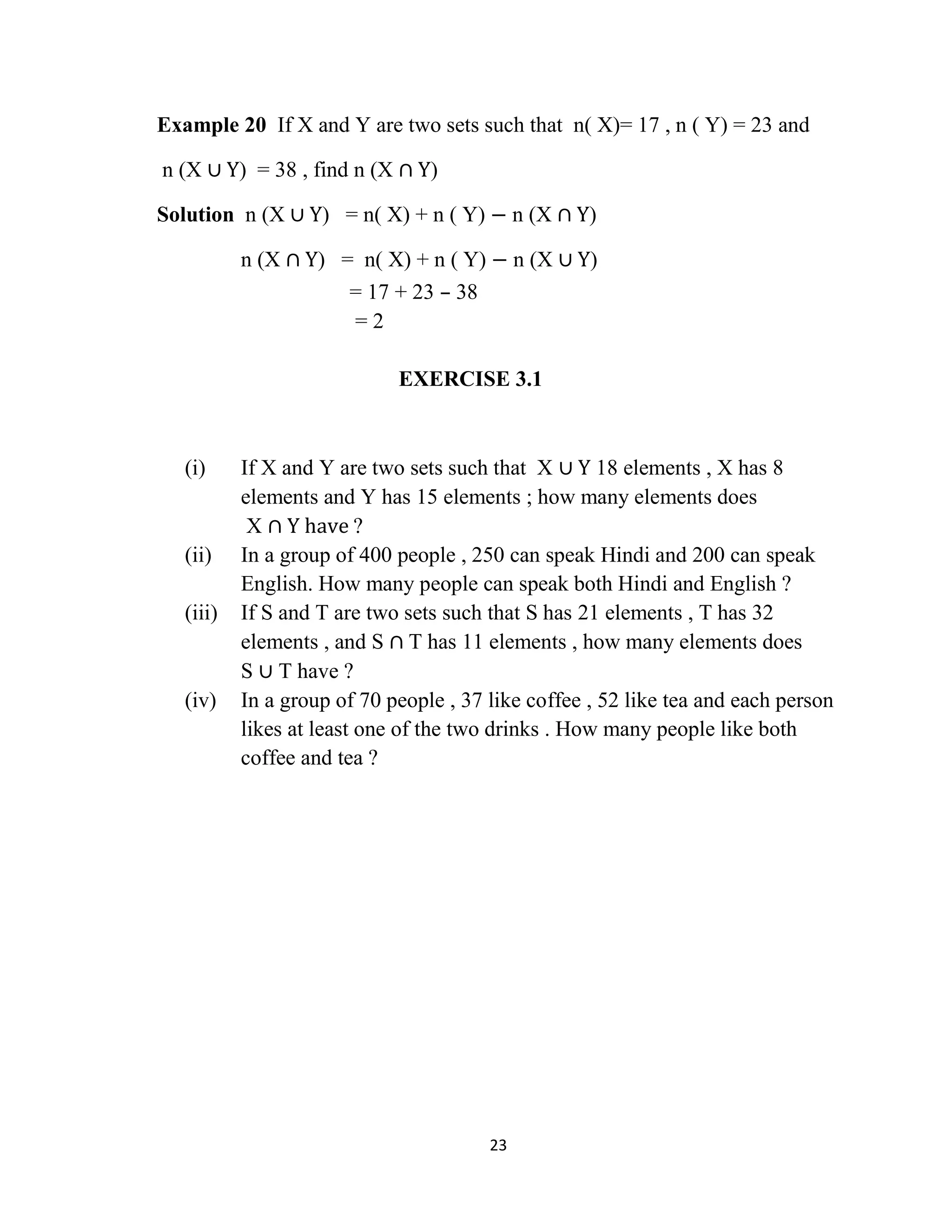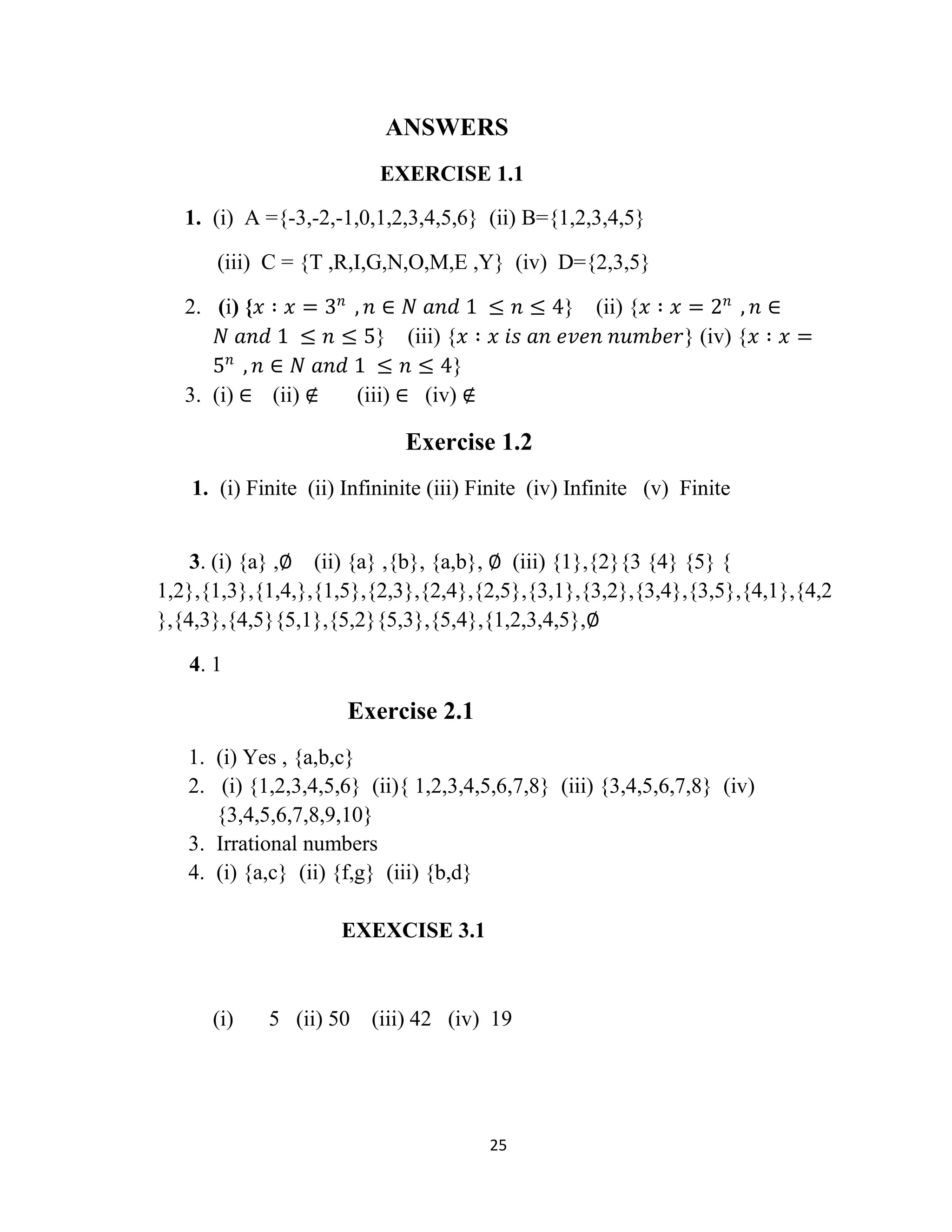This document provides an overview of key concepts in set theory, including:
1) Sets can be represented in roster or set-builder form. Common sets used in mathematics include the natural numbers, integers, rational numbers, and real numbers.
2) The empty set contains no elements. Finite sets have a definite number of elements, while infinite sets have an unlimited number of elements.
3) Two sets are equal if they contain exactly the same elements. A set is a subset of another set if all its elements are also elements of the other set.
4) The power set of a set contains all possible subsets of that set.
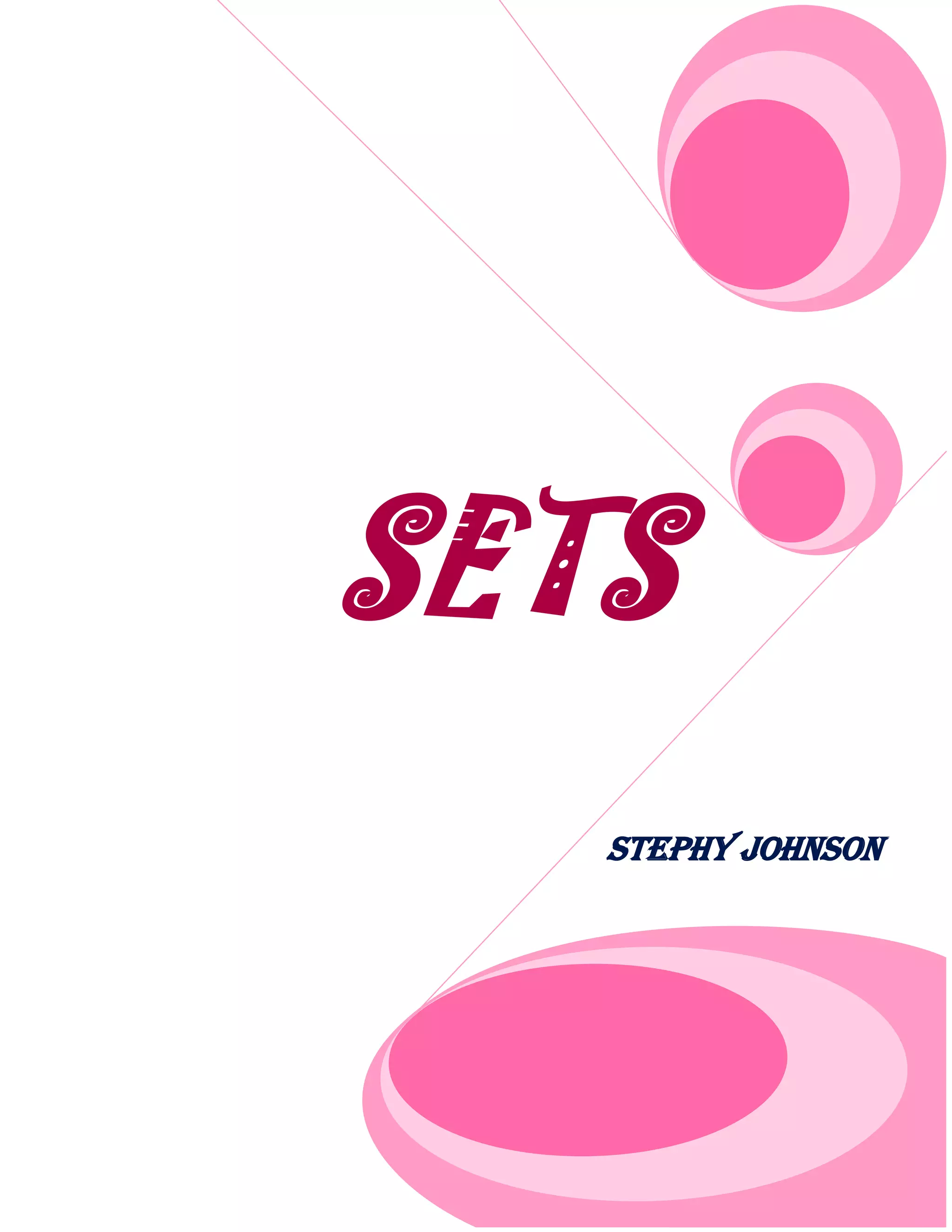
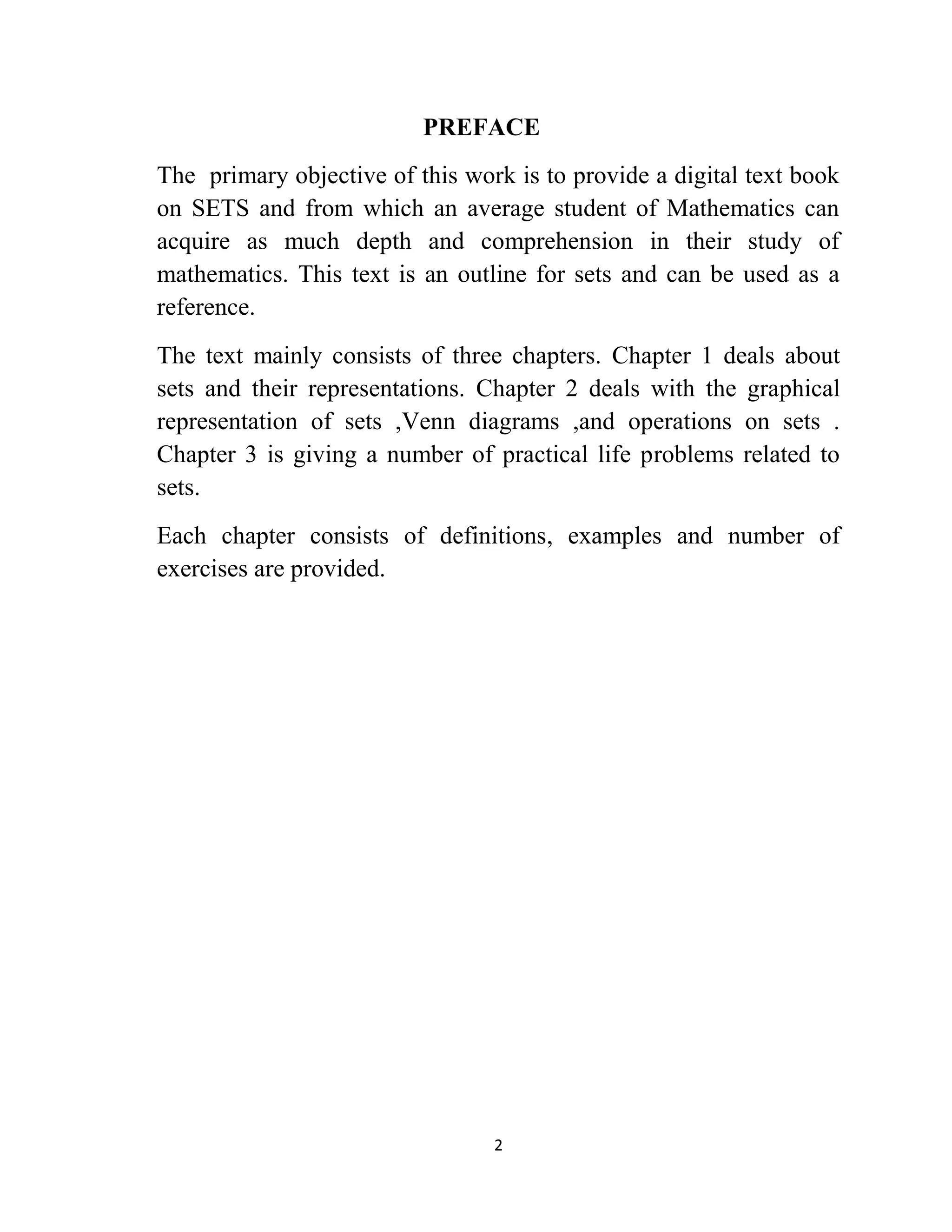
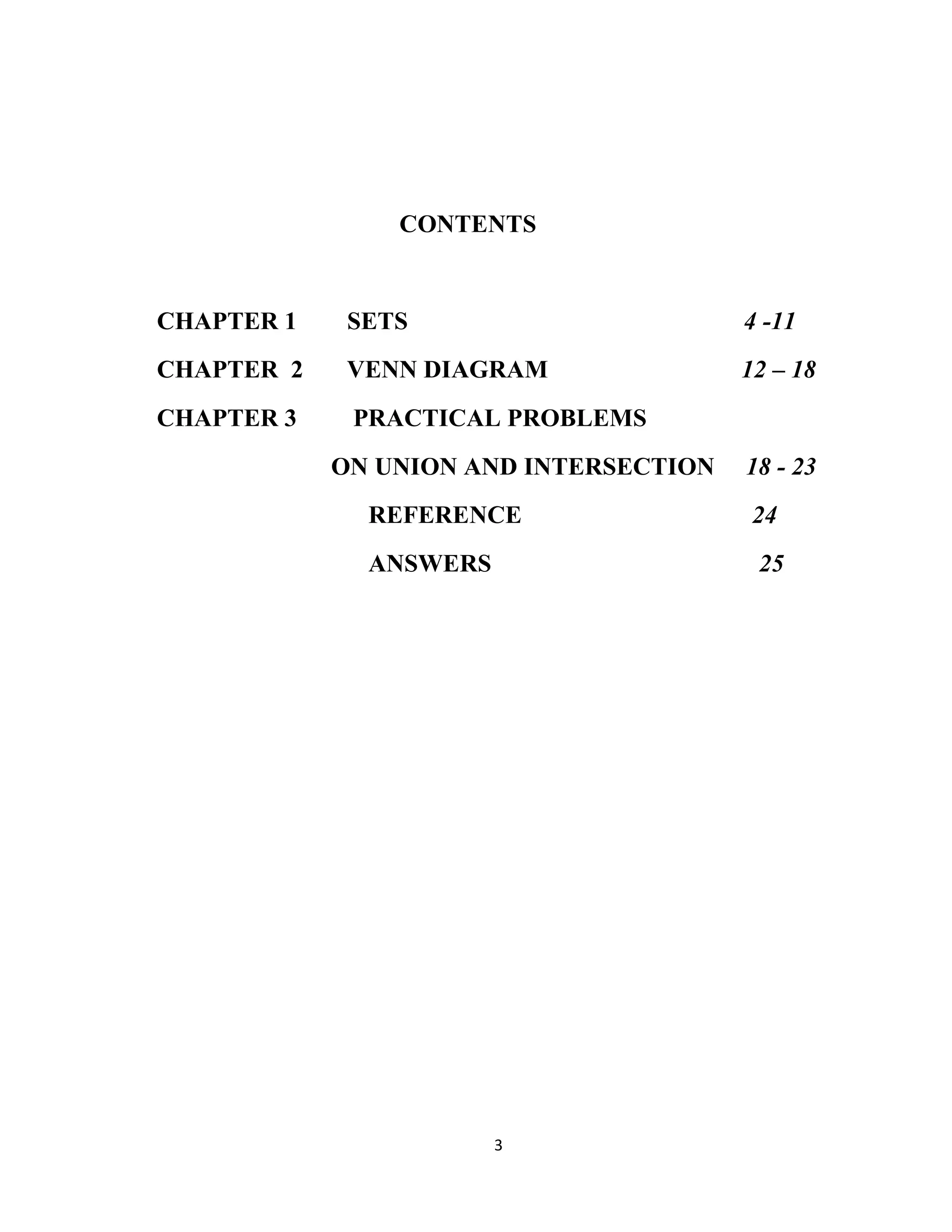
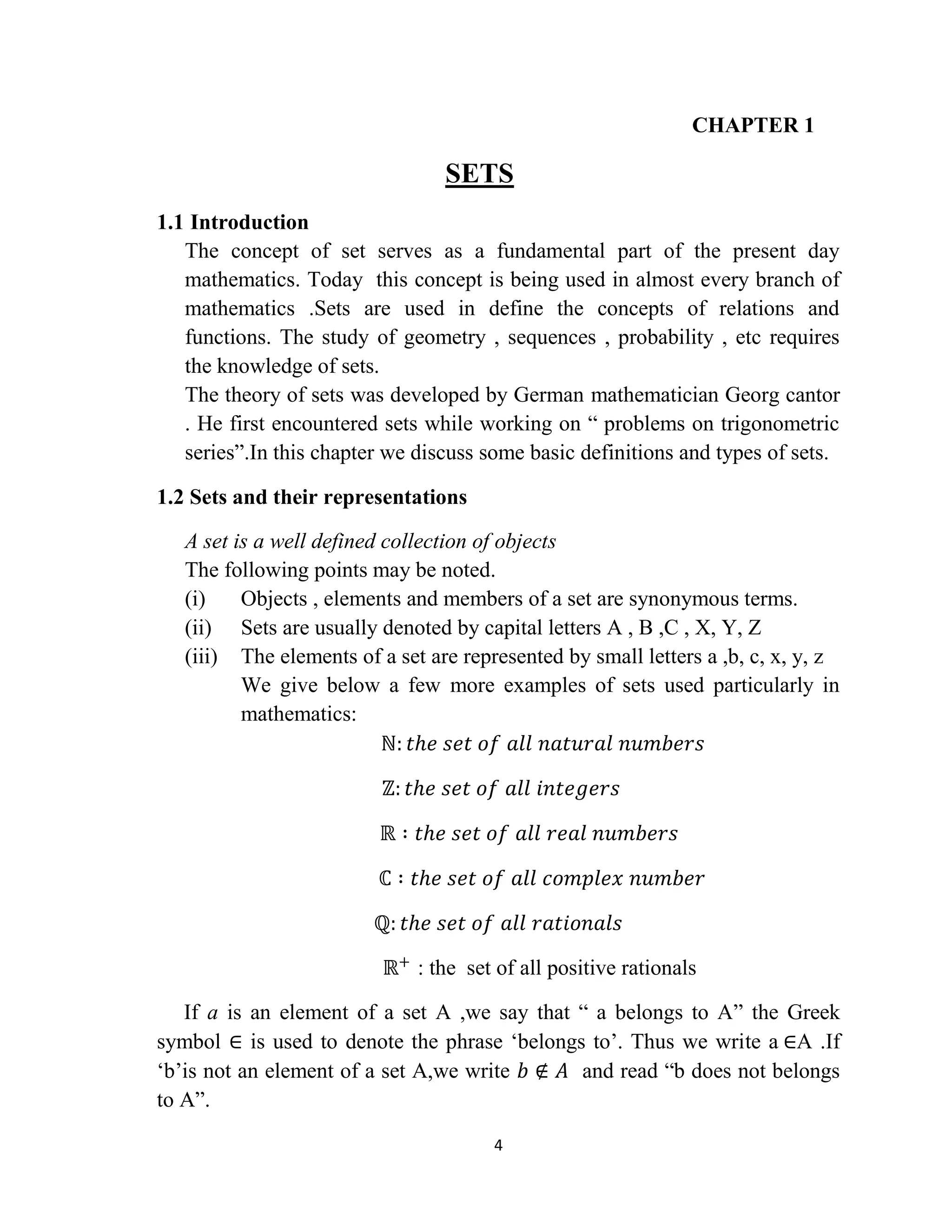
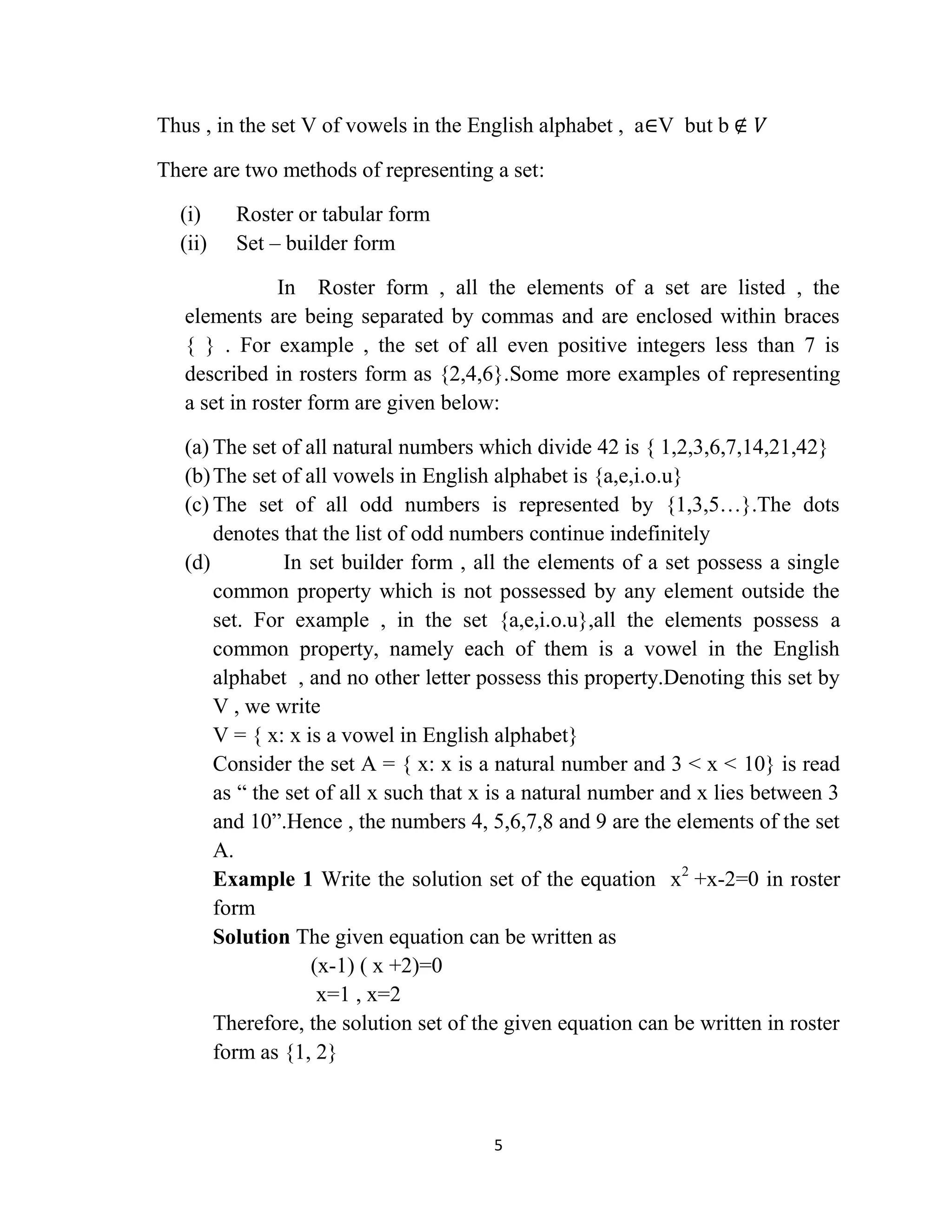
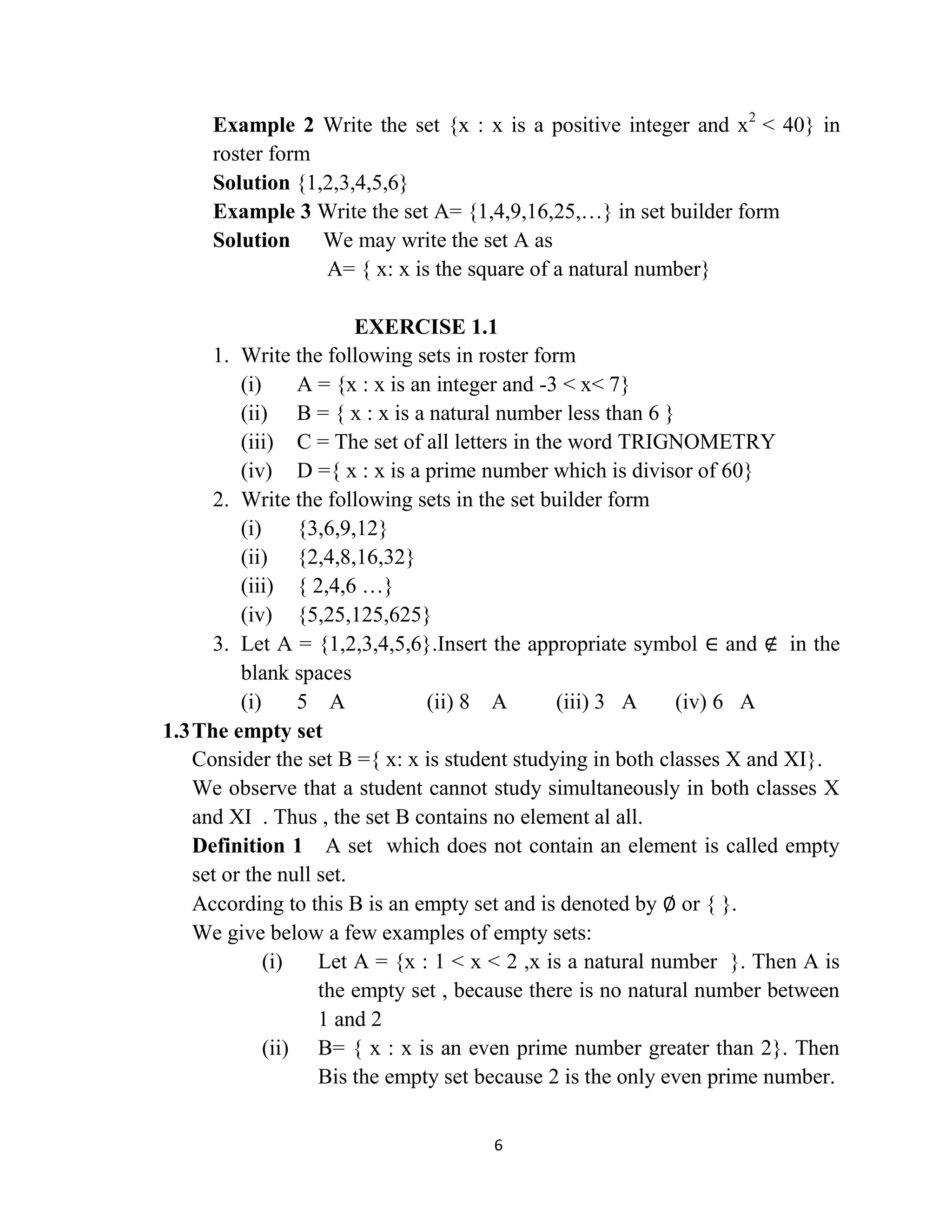
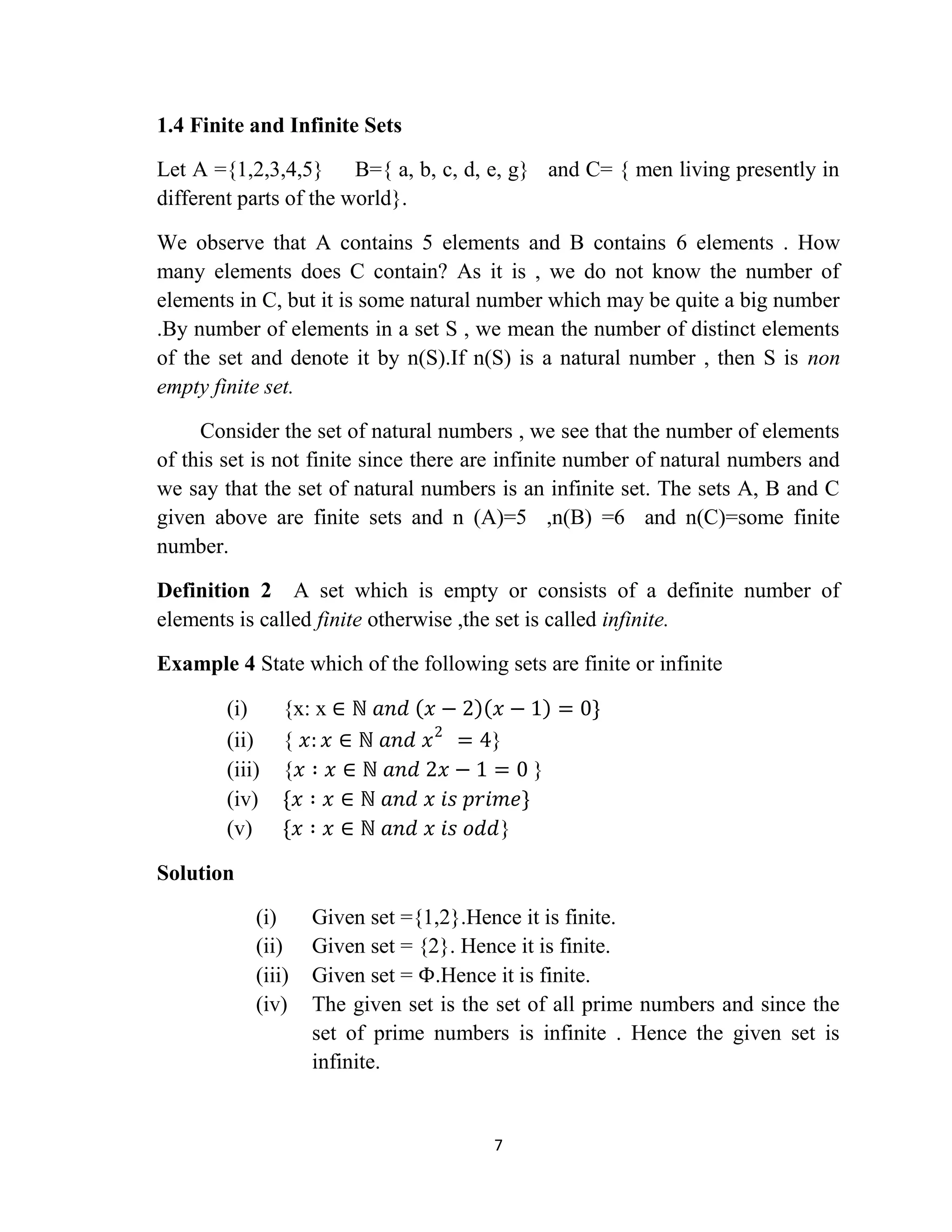
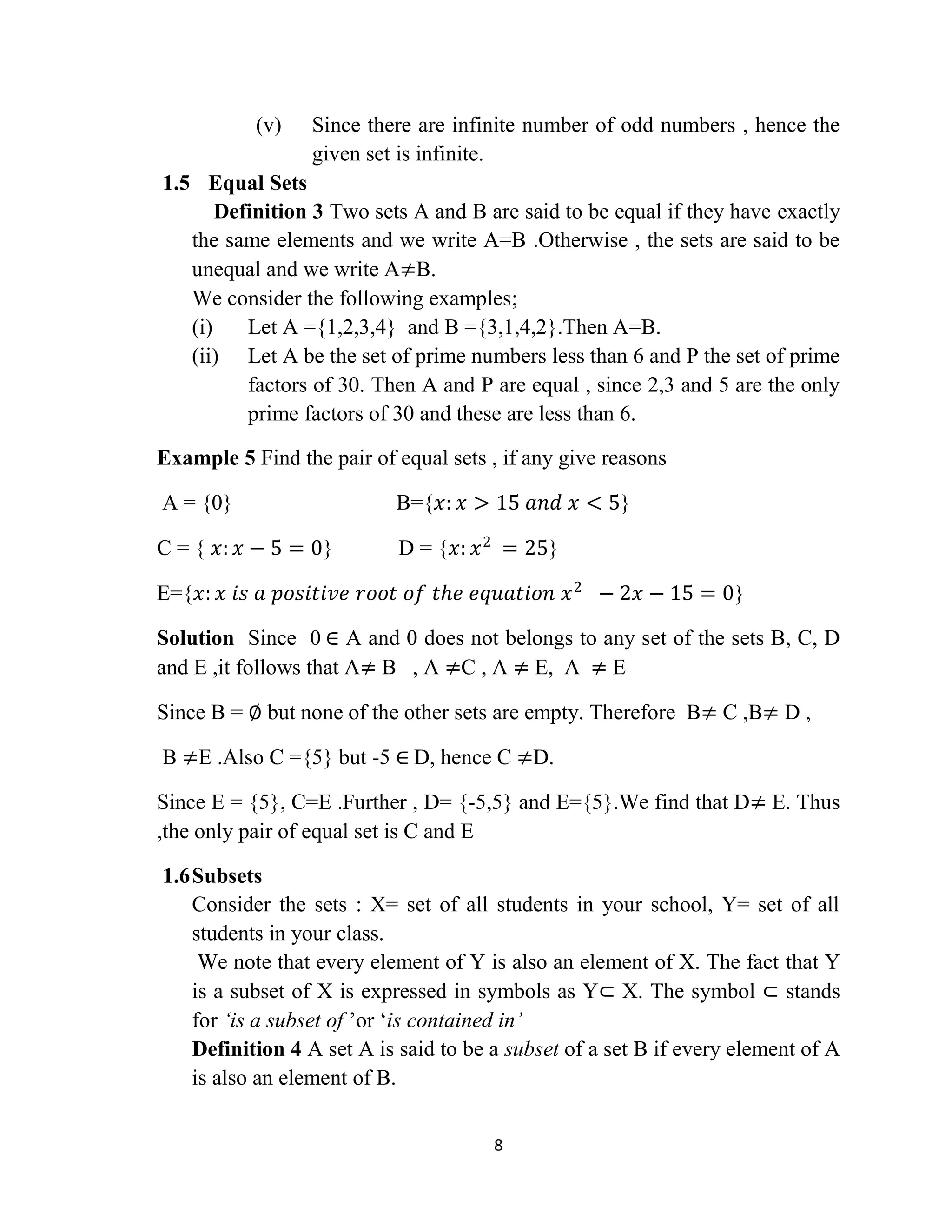
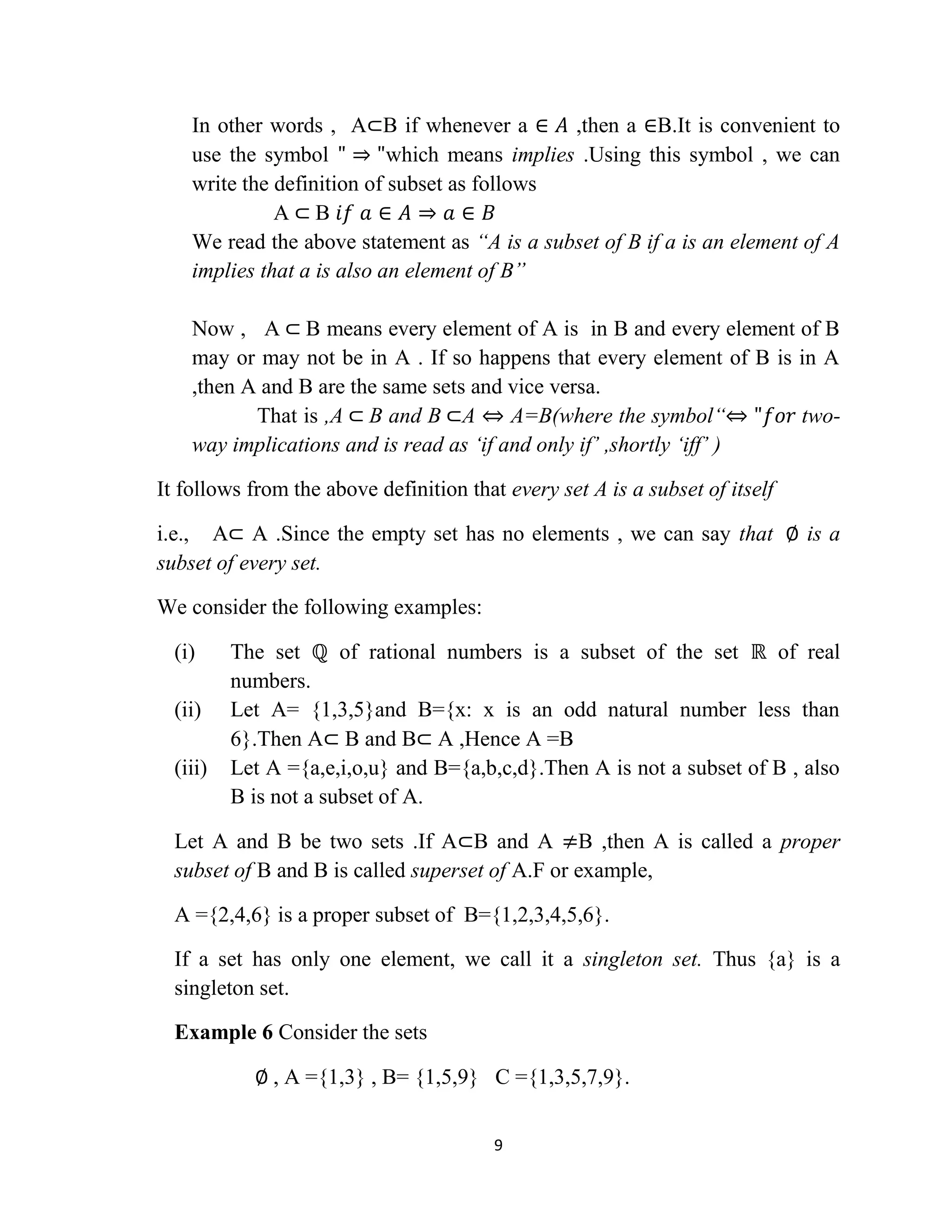

![11
Also note that n[P(A)] =4=22
In general , if A is a set with n(A)=m ,then n[P(A)]= 2 𝑚
1.8 Universal set
Usually , in a particular context ,we have to deal with the elements and
subsets of a basic set which is relevant to that particular context. For
example, while studying the system of numbers ,we are interested in the set
of natural numbers and its subsets such as the set of all prime numbers , the
set of all even numbers ,and so forth. This basic set is called the “Universal
Set” . This universal set is usually denoted by U ,and all its subsets by the
letters A,B,C etc.
For example , for the set of all integers, the universal set can be the set of
all rational numbers, or ,for that matter ,the set of all real numbers. For
another example , in human population studies, the universal set consist of all
the people in the world.
EXERCISE 1.2
1 . Which of the following sets are finite or infinite
(i) The set of months of an year
(ii) {1,2,3,…}
(iii) {1,2,3,…99,100}
(iv) The set of positive integers greater than 100
(v) The set of prime numbers less than 99
2 . Are the following pairs of sets equal ? Give reasons.
(i) A={2,3} B={𝑥: 𝑥 𝑖𝑠 𝑠𝑜𝑙𝑢𝑡𝑖𝑜𝑛 𝑜𝑓 𝑥2
+ 5𝑥 + 6 = 0}
(ii) A ={𝑥: 𝑥 𝑖𝑠 𝑎 𝑙𝑒𝑡𝑡𝑒𝑟 𝑖𝑛 𝑡𝑒 𝑤𝑜𝑟𝑑 𝐹𝑂𝐿𝐿𝑂𝑊}
B={𝑦: 𝑦 𝑖𝑠 𝑎 𝑙𝑒𝑡𝑡𝑒𝑟 𝑖𝑛 𝑡𝑒 𝑤𝑜𝑟𝑑 𝑊𝑂𝐿𝐹}
3 . Write down all the subsets of the following sets
(i) {a} (ii) {a , b} (iii) {1,2,3,4,5} (iv) ∅
4 . How many elements has P(A) , if A= ∅ ?](https://image.slidesharecdn.com/digitaltextsetspdf-151029065351-lva1-app6891/75/Digital-text-sets-pdf-11-2048.jpg)
